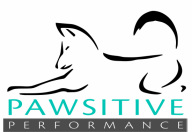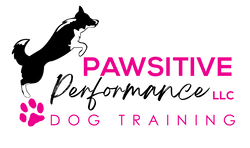 Recently I wrote about the team approach to K9 Fitness and how collaboration between professionals in the veterinary, rehabilitation and fitness fields are important. Because I refer clients regularly for diagnostics and diagnosis, I receive referrals from those professionals when no discernible problem exists, the dog is released to normal activity or a strength or training issue is discovered. A few months ago, a local veterinarian referred a dog and handler to me for strength and flexibility training. The dog was brought to their veterinary clinic due to poor performance on the agility course - knocking bars, occasionally popping out of weave poles and taking wider right turns especially over jumps. Upon palpation the veterinarian did not find anything remarkable and the owner did not seek further diagnostics because nothing was “broken.” The veterinarian referred the dog to me assuming it was a strength or training issue. When you know your dog is off, and your veterinarian can't find anything medically wrong, a good solution can often be strength and body awareness training so the dog can figure out how to best use his body. For purposes of this blog post, I will call the dog Bodi. Bodi is a five-year-old Border Collie. The owner came to me with the same complaints as listed above and unsure what to do or where to go. The dog is the handler’s beloved agility partner and the thought of not being able to continue training with this dog was overwhelming. We talked about progression of jump training, weaves and turns and I had the handler send me agility video of her dog from before and after the issues started. Based on the information provided, and my own personal agility training, it appeared that she had done all the correct training to achieve proper jumping, turning and weave pole movement necessary to compete in agility. However, there was a definite change in his performance. I also asked the handler if she, personally, had had any physical changes – such as a pulled muscle, tight muscles in her legs, injured toe, increased weight or anything else that would affect her movement. There was nothing that she could think of. There were also no noticeable changes in the handler when reviewing the agility videos. After touching Bodi from head to toe, and observing him move and perform a few exercises, I began to design a plan to improve weight distribution, coordination, flexibility and strength. My program is generally designed to help a dog use it’s body efficiently which typically results in improved performance. The owner was asked by the veterinarian to take a 4-week break from agility (just be safe) and perform very specific strength and flexibility exercises (suggested by me) three to four times a week. Daily, walks were recommended on leash for 30-40 minutes, with 10 minutes of off-leash time without other dogs to chase for the same 4-week period. After 4 weeks if symptoms did not return, Bodi was released to all normal activity and a gradual return to performance. I tend to apply a very cautious approach and ask my clients to spend a bit more time on strength and body awareness before returning to full activity just to make sure that we aren’t pushing too quickly. In this case, the handler and I met every three weeks, reviewed the previous exercise plan and Bodi’s progress then designed a new plan increasing the difficulty of the exercises and off-leash time. Each plan was emailed to the veterinarian for review and approval. After several weeks of fitness training, we worked together to design a plan for a gradual approach to full height agility jumps and obstacles, while continuing the strength and flexibility program. The goal was to progress to full agility courses without hesitation or return of symptoms. After a couple months of helping Bodi to understand his body, improve balance and flexibility, he returned to agility without knocked bars and with fast and efficient weave poles. We are still working on tighter right turns. Even with the wider turns, his yards per second improved and he took 1st place in jumpers and 2nd place in his standard run. Using a cautious approach to K9 Fitness, we worked together to improve body awareness, strength and weight distribution, which improved Bodi’s performance. To say we are both thrilled with his improvements would be an understatement. Bodi has since participated in several agility trials over several months without having his previous symptoms return. We continue to increase the difficulty of his fitness program and regularly work on his flexibility and turning power to the right. Bobbie Lyons, Cert CF Online classes enroll 9/9 at HERE K9FITbone for K9Fitness, K9 Cond II, Performance Dog and Rehab self guided classes. Comments are closed.
|
AuthorBobbie Lyons, CCFT, KPA CPT Archives
April 2019
Categories |

 RSS Feed
RSS Feed